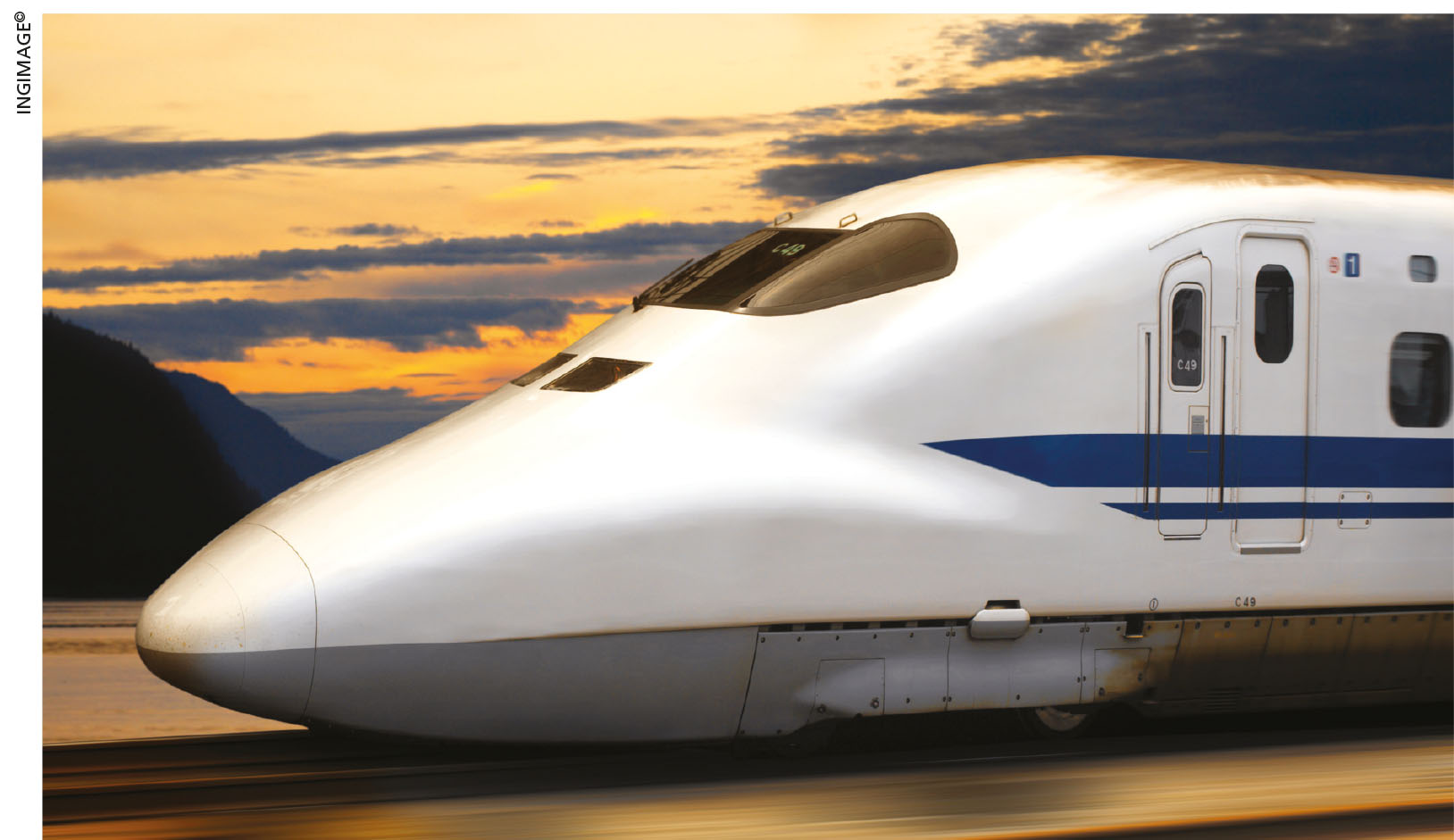TRANSPORT SECTOR
THE REVOLUTIONARY RAILWAY
Sanjeewaka Kulathunga explains how bullet trains drive Japan’s economy

Anyone who has had the opportunity of travelling in trains in Japan has a story to tell – i.e. about their punctuality, speed and cleanness. Railway transportation is one of the major modes of passenger transport in the country; it provides high-speed travel between the major cities on all four islands and the metropolitan areas.
Fifty-four years ago, Japan’s bullet train completed its first journey from Tokyo to Osaka, reducing the usual travel time from seven to four hours. The introduction of the bullet train was a revolution and the ‘Shinkansen,’ as it is called in Japanese, has been transporting millions of passengers since 1964 with a pristine record of safety and punctuality.
Believe it or not, the average delay of a bullet train in Japan is less than 30 seconds.
The bullet train is a symbol of Japanese efficiency and effectiveness. However, its significance in shaping Japan’s economy is more praiseworthy than symbolic. Most Japanese live in a limited number of locations because the habitable land in the country is restricted to 20 percent of its land mass. Therefore, the high-speed railway has provided a viable solution for the numerous workers who commute from one city to another.
In addition, the bullet train has also had a significant impact on the development of Japan’s tourism industry. Remote tourist destinations can be easily accessed by bullet train, and both local and foreign travellers are more likely to choose it as their medium of transportation.
Following the introduction of speed railway links throughout Japan, thousands of businesses were able to clearly visualise and strengthen the logistical connectivity between their suppliers.
In Japan, the median distance between firms and their suppliers and consumers was approximately 32 kilometres. As a result, only large-scale and highly profitable companies were able to invest in finding suppliers across the country. Eventually, speed railways could balance that advantage by allowing even small-scale firms to maintain trade relations with suppliers located a considerable distance away.
In contrast to air transport for a distance between 200 and 900 kilometres, high-speed railways in Japan connect city centres without the inconvenience of enduring airport delays. This has improved accessibility for freight transport and reduced traffic congestion.
In the aftermath of World War II, private railways proved to be more efficient than public rail transport. Consequently, Japanese National Railways (JNR) was privatised in 1987, and has emerged as a healthy and profitable venture. The privatised Japanese railway repaid construction loans while infusing capital investment to improve the entire rail network and reverse the stagnation that was reported under government management.
It is noteworthy when costs are reduced in mega projects like high-speed railways. Since Japan is home to a rugged terrain, railway construction companies have become specialised in building relatively compressed rail infrastructure. Accordingly, the air dynamic design of the bullet trains made it possible to travel smoothly through small tunnels and a compact railway layout. Those construction strategies have helped keep costs down.
With regard to the cost of maintenance, concrete rail beds are higher in terms of initial costs but much lower than maintaining railroads made of gravel in the long term; and the return on investment can be completed in less than 10 years. Japanese railway companies have been able to strike a balance between initial outlays and maintenance costs, thereby optimising efficiency and effectiveness.
Due to the substantial reduction in travel time, bullet trains have generated various benefits for Japan. This is because the speed railway has bundled travel with valuable economic benefits. Passengers have plenty of time to spend at railway stations to purchase goods and services; and the commutable area has grown, resulting in increased travel by locals and foreigners.
And due to the increased accessibility of previously inaccessible land, the value of real estate has also risen.
There has been a growing trend and demand for in-station retail businesses, whereby railway stations have been renovated and reconstructed as luxury shopping malls to cater to the needs of commuters. Railway stations now house an array of restaurants, clothing stores and shops. For passengers in Japan, railway stations are not only transit points but places to relax and engage in retail therapy, as well as other activities.
Accordingly, the economic benefits of Japanese railways depend not only on the reduction of travel time but also the diverse business models that have been established within station premises.



